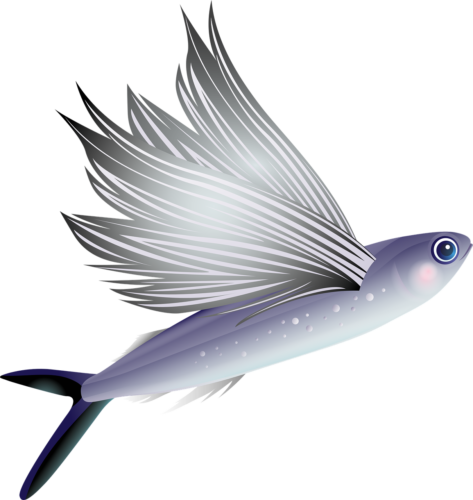Flying fish are a fascinating group of fish known for their unique ability to glide above the water’s surface. They belong to the family Exocoetidae and are found in warm tropical and subtropical waters around the world. These fish have developed special adaptations that enable them to take to the air and “fly” for short distances.
Flying fish use a unique launching technique to take flight. They build up speed underwater by rapidly beating their tails, and then propel themselves out of the water using a burst of energy. Once in the air, they spread their pectoral fins and glide above the water’s surface. Some species can stay airborne for several seconds, covering distances of up to 200 meters or more.

How much does a flying fish weigh?
The weight of a flying fish varies depending on the species, but generally ranges from a few grams to about 2 ounces (57 grams). The largest flying fish on record was 16 inches (41 cm) long and weighed 2 pounds (907 grams)3.
Some FAQs about flying fish
How do flying fish fly?
Flying fish do not actually fly, but glide in the air using their enlarged pectoral fins as wings. They propel themselves out of the water at speeds of more than 35 miles (56 km) per hour, and can glide for up to 650 feet (200 meters) or more24.
Why do flying fish fly?
Flying fish fly mainly to escape from underwater predators, such as swordfish, tuna, marlin and mackerel. However, flying also exposes them to aerial predators, such as frigate birds and gulls12.
Where do flying fish live?
Flying fish live in all of the oceans, especially in tropical and warm subtropical waters. They are commonly found in the epipelagic zone, the top layer of the ocean to a depth of about 200 m (656 ft)12.
What do flying fish eat?
Flying fish are omnivorous and feed on a variety of foods, including plankton, small insects and crustaceans23.
How long do flying fish live?
The lifespan of flying fish is not well known, but some species may live for up to five years5.

Fun facts about flying fish
- Flying fish are part of the national dish of Barbados, cou-cou and flying fish. The taste is similar to that of a sardine1.
- Flying fish roe is a delicacy in some cuisines, such as Japanese and Peruvian1.
- The Exocet missile is named after flying fish, as it is launched from underwater and skims the surface before striking its target1.
- In the Solomon Islands, flying fish are caught while they are gliding in the air, using nets held from outrigger canoes1.
- Some species of flying fish have four enlarged fins instead of two, and are known as four-winged flying fish2.
Source:
(1) Flying fish – Wikipedia. https://en.wikipedia.org/wiki/Flying_fish.
(2) Flying Fish | National Geographic. https://www.nationalgeographic.com/animals/fish/facts/flying-fish.
(3) Flying Fish – Facts, Size, Diet, Pictures – All Animal Facts. https://allanimalfacts.com/flying-fish/.
(4) Flying Fish | National Wildlife Federation. https://www.nwf.org/Educational-Resources/Wildlife-Guide/Fish/Flying-Fish.
(5) Flying Fish Facts – AZ Animals. https://a-z-animals.com/animals/flying-fish/.
Leave a Reply